CMS Compact Muon Solenoid LHCf LHC-forward | LHCb LHC-beauty | |
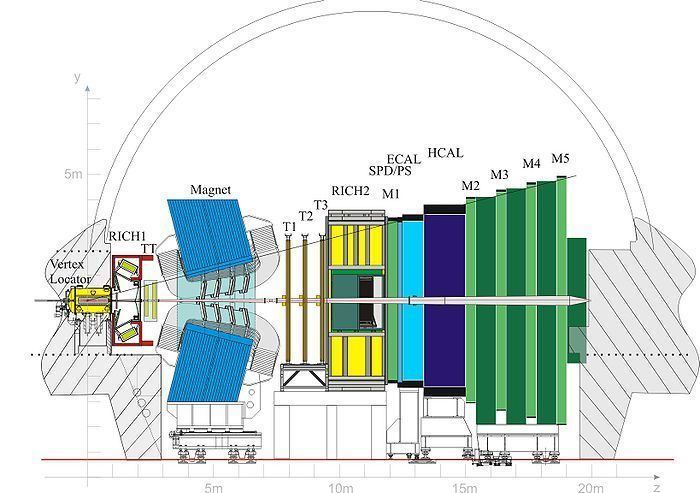 | ||
ATLAS A Toroidal LHC Apparatus ALICE A Large Ion Collider Experiment TOTEM Total Cross Section, Elastic Scattering and Diffraction Dissociation | ||
Understanding why antimatter has disappeared the lhcb experiment at lhc
The LHCb (standing for "Large Hadron Collider beauty") experiment is one of seven particle physics detector experiments collecting data at the Large Hadron Collider accelerator at CERN. LHCb is a specialized b-physics experiment, that is measuring the parameters of CP violation in the interactions of b-hadrons (heavy particles containing a bottom quark). Such studies can help to explain the Matter-Antimatter asymmetry of the Universe. The detector is also able to perform measurements of production cross sections and electroweak physics in the forward region. Approximately 840 people from 60 scientific institutes, representing 16 countries, form the collaboration who built and operate the detector. As of 2014, the spokesperson for the collaboration is Guy Wilkinson. The experiment is located at point 8 on the LHC tunnel close to Ferney-Voltaire, France just over the border from Geneva. The (small) MoEDAL experiment shares the same cavern.
Contents
- Understanding why antimatter has disappeared the lhcb experiment at lhc
- European researchers s night 2016 cern lhcb experiment virtual tour hd
- Physics goals
- The LHCb detector
- Subsystems
- Results
- References
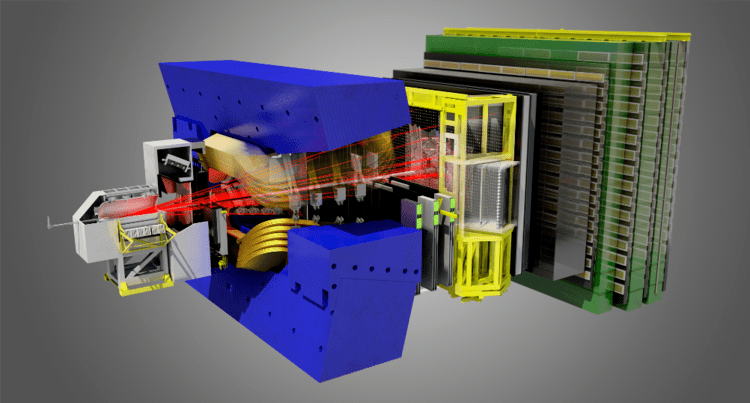
European researchers s night 2016 cern lhcb experiment virtual tour hd
Physics goals
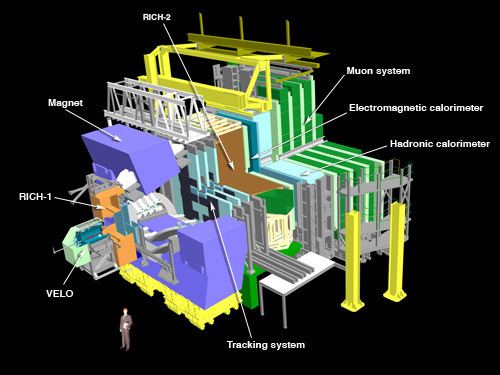
The experiment has wide physics program covering many important aspects of Heavy Flavor (both beauty and charm), Electroweak and QCD physics. Six key measurements have been identified involving B mesons. These are described in a roadmap document that form the core physics programme for the first high energy LHC running in 2010–2012. They include:

The LHCb detector
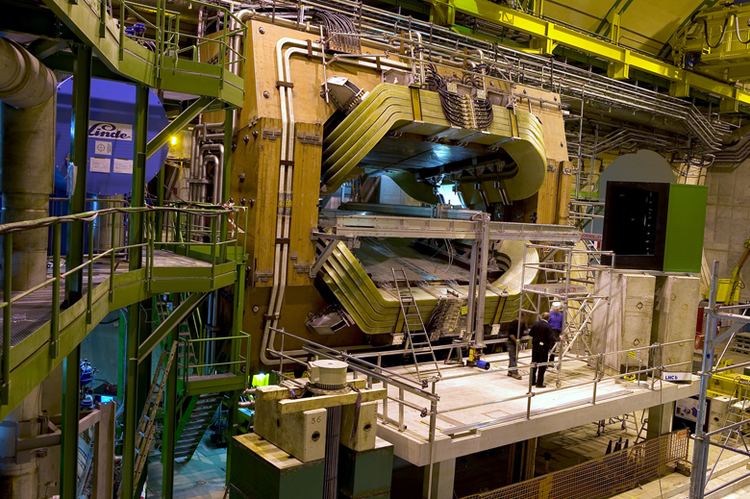
The fact that the two b-hadrons are predominantly produced in the same forward cone is exploited in the layout of the LHCb detector. The LHCb detector is a single arm forward spectrometer with a polar angular coverage from 10 to 300 milliradians (mrad) in the horizontal and 250 mrad in the vertical plane. The asymmetry between the horizontal and vertical plane is determined by a large dipole magnet with the main field component in the vertical direction.
Subsystems

The vertex detector (VELO) is built around the proton interaction region. It is used to measure the particle trajectories close to the interaction point in order to precisely separate primary and secondary vertices.
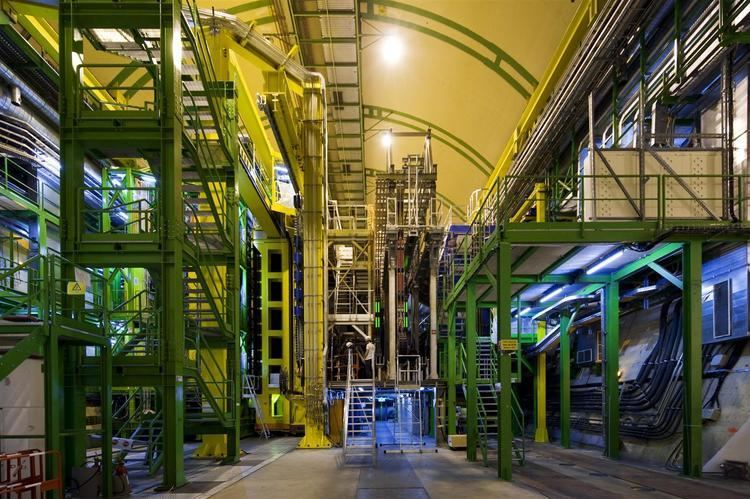
The detector operates at 7 millimetres (0.28 in) from the LHC beam. This implies an enormous flux of particles; The VELO has been designed to withstand integrated fluences of more than 1014 p/cm2 per year for a period of about three years. The detector operates in vacuum and is cooled to approximately −25 °C (−13 °F) using a biphase CO2 system. The data of the VELO detector are amplified and read out by the Beetle ASIC.
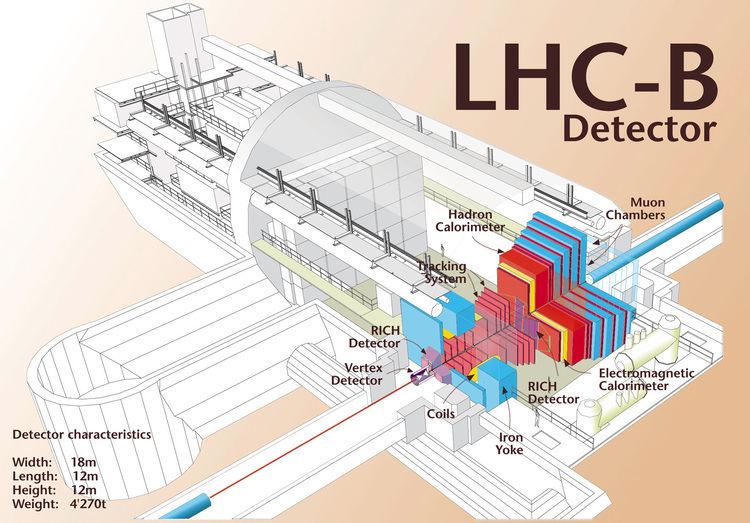
The RICH-1 detector (Ring imaging Cherenkov detector) is located directly after the vertex detector. It is used for particle identification of low-momentum tracks.
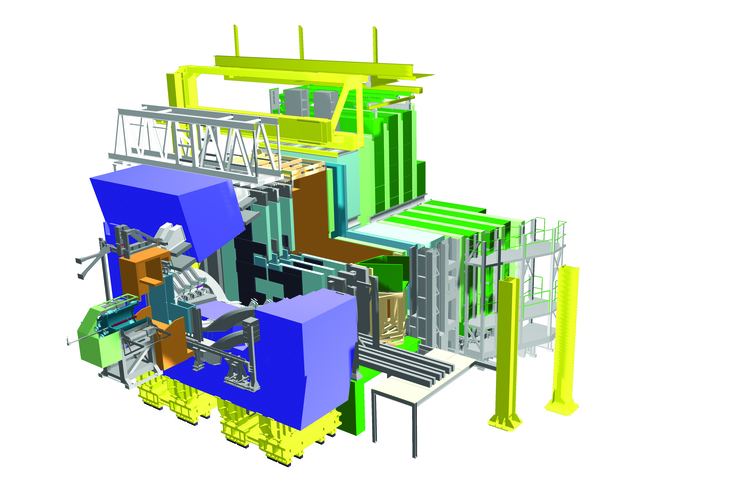
The main tracking system is placed before and after the dipole magnet. It is used to reconstruct the trajectories of charged particles and to measure their momenta. The tracker consists of three subdetectors:
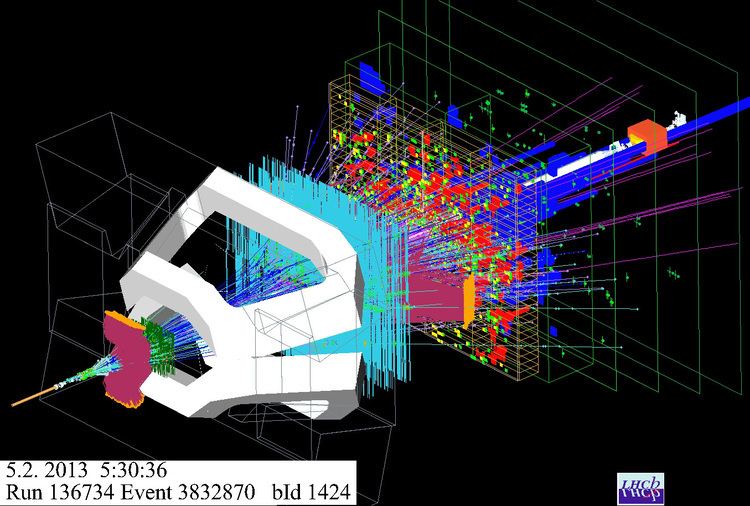
Following the tracking system is RICH-2. It allows the identification of the particle type of high-momentum tracks.
The electromagnetic and hadronic calorimeters provide measurements of the energy of electrons, photons, and hadrons. These measurements are used at trigger level to identify the particles with large transverse momentum (high-Pt particles).
The muon system is used to identify and trigger on muons in the events.
Results
During the 2011 proton-proton run LHCb recorded a luminosity of 1 fb−1 at energy 7 TeV. In 2012 about 2 fb−1 was collected at 8 TeV. These datasets allow them to carry out the physics program of precision Standard Model tests with many additional measurements. The analysis led to evidence for the flavour changing neutral current decay Bs → μ μ. This measurement impacts the parameter space of supersymmetry. A combination with CMS data from the completed 8 TeV run allowed for a precise measurement of the strange b-meson to dimuon branching fraction. CP violation was studied in various particle systems such as Bs, Kaons, and D0. New Xi baryons were observed in 2014. Analysis of the decay of bottom lambda baryons (Λ0
b) in the LHCb experiment also revealed the apparent existence of pentaquarks, in what was described as an "accidental" discovery.
